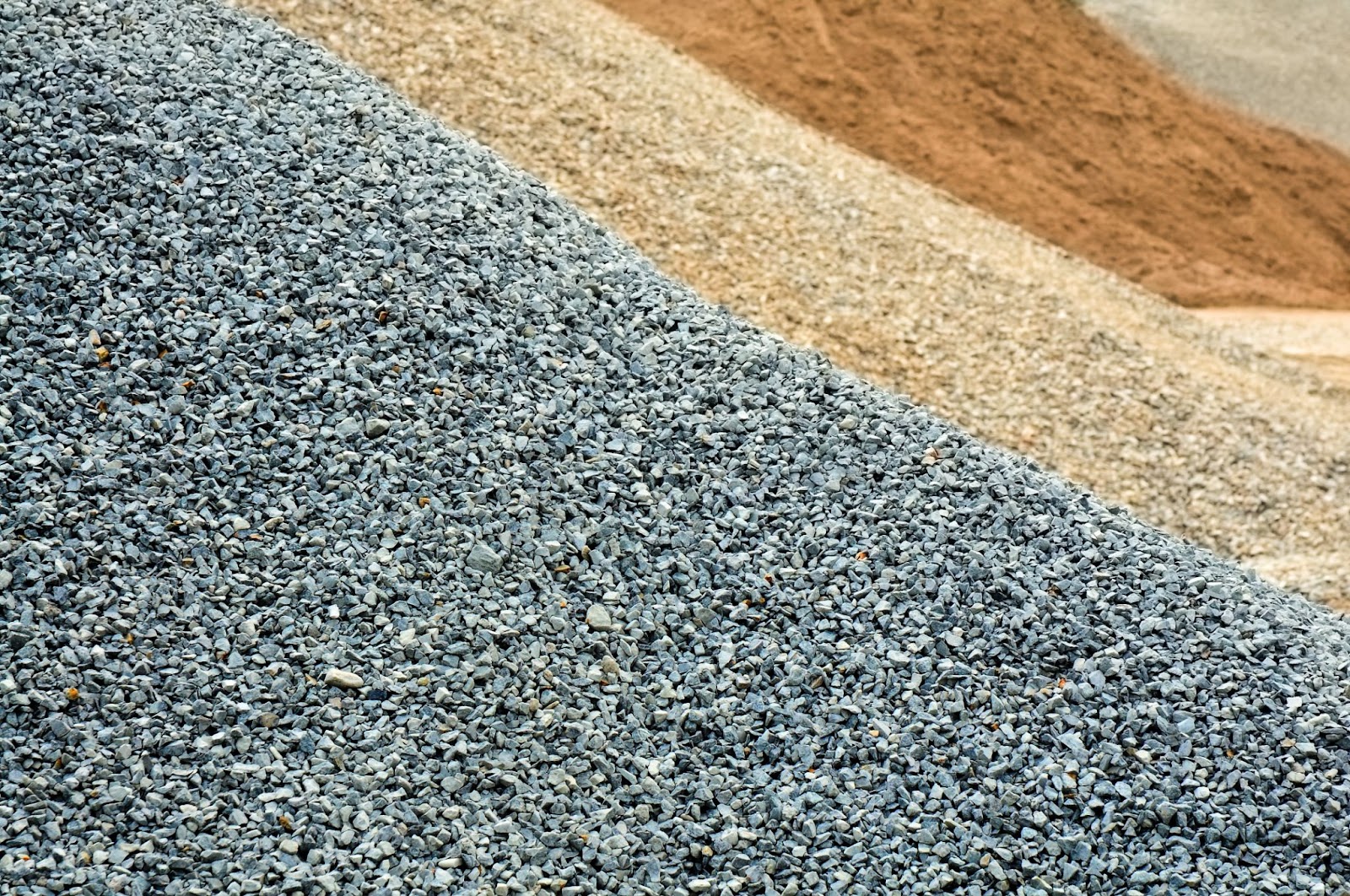Posted: 8th June 2023 | Author: Adam Brown | Category: Aggregate
Back to news

In the world of construction, the term ‘aggregate’ is commonly used. You’ll hear it in relation to cement and concrete, foundations and footings. But what does it actually mean?
Read on to find out more about aggregates in construction, including how to work out how much aggregate you need for your project.
In simple terms, aggregates are a collection of coarse and fine materials that are combined for use in construction. Lots of different materials can be used, including crushed stone, gravel, sand, recycled concrete and slag. These may be sourced from natural deposits, or from the crushing of rocks and minerals.
They come in different types and sizes, ranging from fine particles to larger chunks. It all depends on the requirements of the job.
Aggregates play a vital role in construction projects, providing strength, stability, and durability to various structures.
Type 1 aggregate, also known as Type 1 MOT (Ministry of Transport), is a specific grade of aggregate. It’s commonly used as a sub-base material for constructing roads and paths.
It consists of crushed rock, typically granite or limestone. It can also contain crushed concrete. Particle sizes can range from dust all the way up to 50mm.
This kind of aggregate is used for road building projects because it provides excellent load-bearing capabilities. This ensures maximum stability even under the very heavy weight of vehicles.
Aggregates serve many different purposes in construction, both functional and decorative. Some common uses of aggregates include the following:
Aggregates are a major component of concrete, along with cement, water and sand. In fact, they can make up as much as 80% of the overall volume of concrete. Aggregates provide bulk and strength to the concrete mix, contributing to its load-bearing capacity and durability.
Aggregates are essential for constructing and maintaining roads, paths and parking areas. They are often used in sub-base layers, providing stability, drainage and load distribution.
Aggregates are used as a base material for foundations and footings. They help to ensure proper load distribution and stability for structures. Another common use is to fill voids created around the foundations of buildings. This is because they are easier to compact than soil, and they provide a more solid, supportive finish for the structure.
A common use for aggregates is drainage, particularly those with larger particle sizes which allow water and moisture to flow through. They’re used around pipes and drains, on roads, and to improve drainage within soil.
You can also find a wide range of decorative aggregates available, including coloured stones, pebbles and crushed glass. These can all be used in landscaping projects to enhance the aesthetics of the outdoor space. You can use them to create pathways and attractive driveways, and to decorate gardens as well as public spaces.
Now we come to the challenging part - working out exactly how much aggregate you need to buy for your project. Underestimate and the job could be held up while you source some more. But overbuy and you could end up wasting your money.
Determining the quantity of aggregate needed for a construction project can be tricky. However, there are a few rules of thumb you can follow to work out how much you’ll need. Here are a few of our top tips:
Set out the project requirements. This includes understanding the type of aggregate required, its intended use and any relevant regulations or construction specifications.
Calculate the volume. Start by measuring the area where you’ll be using the aggregate, including width, height and depth so you can get an idea of volume. Enter these measurements into our handy aggregate coverage calculator, and select the type of aggregate you need. This will give you an indication of how much you need to buy.
Take into account compaction and shrinkage. When estimating how much aggregate you’ll need, make sure to account for any compaction or shrinkage that may occur during the construction process. This is especially important when using aggregates for sub-base or fill materials.
Buy slightly more than you need. It’s always good to have a contingency, just in case there’s a change in the requirements of the project or any materials end up being wasted during the building process. It can be helpful to order bulk bags to ensure you don’t run out.
If you’re still unsure how much aggregate you’ll need, it could be worth asking the opinion of an expert. A construction professional or aggregate supplier should be able to give you helpful guidance based on their experience of similar projects.
By following these guidelines and seeking expert advice when necessary, you can make a reasonably accurate estimate of the aggregate quantity you’ll need for your project. Hopefully, you’ll be able to avoid running out or spending too much.
Back to news
The Author: Adam Brown
With a background as a Mechanical Engineer, I started Nationwide Supplies alongside my brother with a vision to modernise what seemed a stuck-in-its-ways industry in the builders merchant sector. Since 2011 it has been my goal to source quality products at the correct prices to be able to offer a saving to customers along with high quality customer service which offers quick delivery and superior technical knowledge in the industry.